A kitten eats litter for the toilet: how harmful is it and what to do in such a situation?
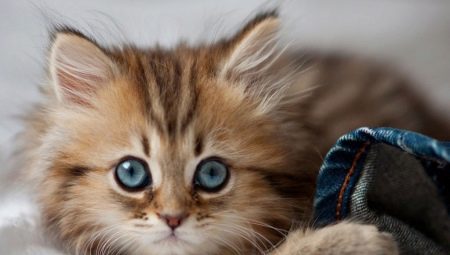
With the appearance of a small meowing ball in the apartment, many joyful emotions arise. At the same time, a playful mischief will bring the owner no less worries. For example, a common situation often arises - the kitten begins to eat litter for the litter box. Let's figure out what to do in a similar situation.
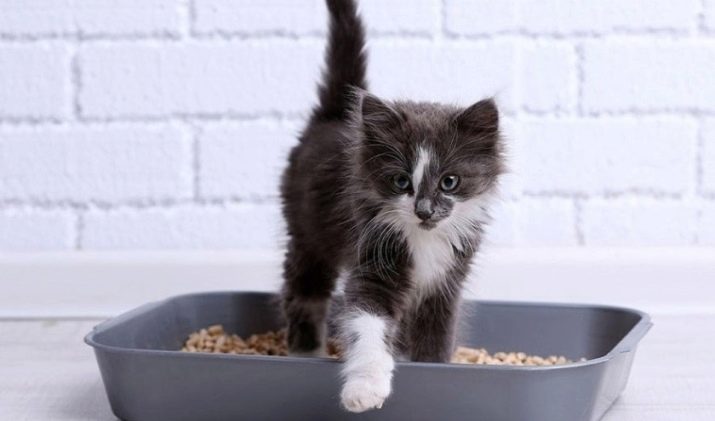
Causes
The reasons for the cat eating litter can vary. Experts say that the pet shows interest in this "food" on several occasions.
- Needs vitamins and minerals. The growing body of a cat requires the necessary supplements to strengthen its teeth and claws. If an animal feels a lack of calcium or phosphorus, then it (by intuition) begins to look for solid food. For example, bentonite clay cat litter is an excellent option for him. To avoid such situations, the breeder should add dairy and meat products to the pet's diet or use dry food, which contains vitamins and minerals in the proper amount.
- Sharpens teeth. Cats, in essence, are miniature predators, so sharpening of fangs and claws is in their blood. Thus, the solid toilet filler instantly grabs his attention. The animal tries to sharpen teeth and claws on its granules. In this case, the owner needs to purchase special devices (for example, a calcite stone) or offer the kitten a tough treat in the form of bones (pork or beef). It is better to refuse small chickens: the baby may choke and die.
- Nervous and worried. A fluffy kitten that has just arrived in the owner's apartment can be emotionally distressed. Therefore, the mixture for the toilet is a kind of "stress seizing" for him. The breeder needs to distract the pet from the bad habit with a new toy or tasty treat.
- Plays. Sometimes curious kittens try to figure out what constitutes their litter box. Another reason is the smell of the toilet mix. The special scent of the filler attracts the cat. In rare cases, pets have behavioral abnormalities, as a result of which he eats inedible objects for no apparent reason. In this case, you will need the help of a specialist.
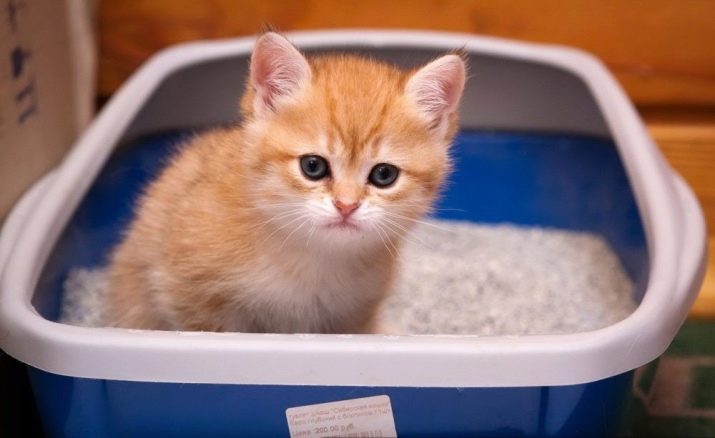
What is the danger?
Eating litter from the litter box is not the best activity for your pet. First of all, the granules of the mixture stick to the tongue, the palate of the animal, and it is difficult for him to spit out this lump. Thus, the cat can "earn" indigestion.
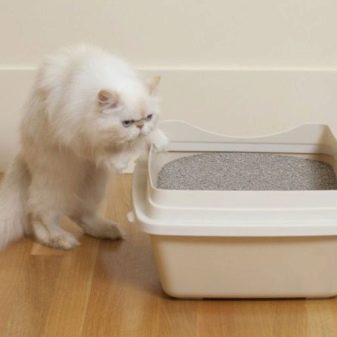
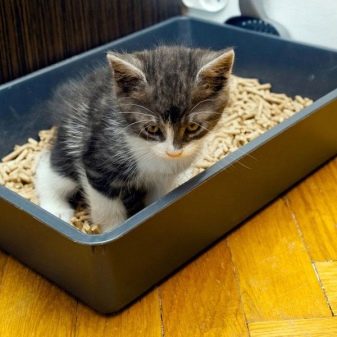
Note that most cat litter mixes do not contain toxic substances. However, the greatest danger to a kitten is represented by silicone gel fillers. They are highly absorbent. Once in the stomach of the animal, the granules swell and cause discomfort in it. In addition, lumps are very harmful to him. If a large amount of litter mix enters the cat's mouth, which begins to clump under the influence of saliva, the animal may choke.
And if the ill-fated lumps "get" to the stomach, then there may be a "failure" in the digestive system of the animal, which will require the intervention of a surgeon.
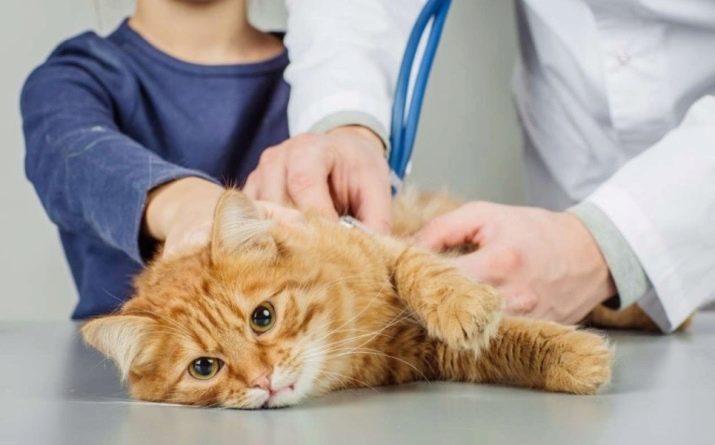
The safest are considered fillers, which are wood pellets. They are quite large and the pet will not be able to choke on them. Also, they do not become lumps, but under the influence of moisture they turn into dust - they can be safely flushed down the toilet. Corn powder is another safe cat litter mixture. It is produced from environmentally friendly waste. It is absolutely harmless, but its cost is quite high. Also in pet stores you can find special fillers marked "for kittens". These mixtures are the safest.
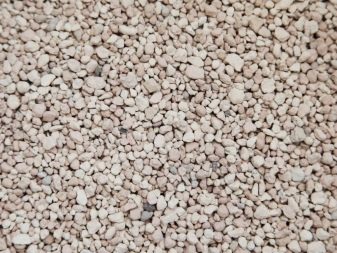

How to wean?
As we have already found out, it is extremely undesirable for a cat to eat litter for a litter box. The owner's action in this case is one of two things.
- Try talking to your pet. Take him in your arms, caress him and calmly explain to him that you cannot eat from the tray. The cat must understand that otherwise he will be punished. Naturally, it will be more difficult to "negotiate" with a playful kitten.
- Purchase a dedicated double bottom litter box or place a lid on your litter box. This will close the backfill from the kitten's view. But at the same time, the pet's waste products will not be hidden, which will provoke the appearance of an unpleasant odor in the apartment. This problem is solved by frequent cleaning and washing of the tray.
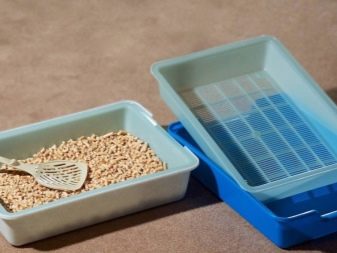
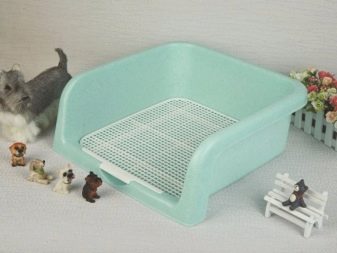
Undoubtedly, if the pet does not want to give up the harmful "delicacy", it is best for the breeder to completely remove all fillers and buy a tray with a lattice. Such a product will greatly facilitate the life of the cat owner and save money. In addition, the pet's feet will be clean, as it will stop "spreading" the filler granules throughout the apartment.
The only drawback of trays with a lattice is their frequent cleaning, that is, if you leave such a toilet after visiting your pet for a couple of hours, you will immediately feel an unpleasant, pungent smell.
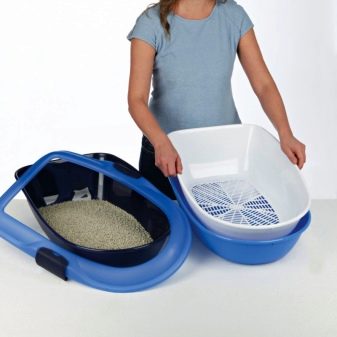
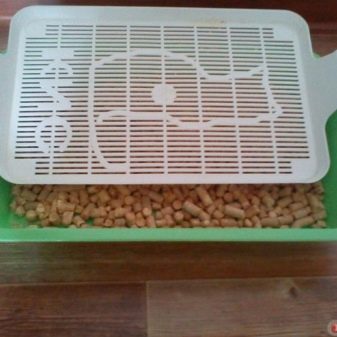
First aid
If the fluffy pet has eaten a large amount of silica gel or bentonite litter, then your actions should be as follows:
- rinse the cat's mouth promptly;
- take the animal to the veterinarian;
- inform the specialist about the type of filler.

Note that kittens have a much higher risk of death than an adult cat. A kid who is full of silicone granules can die within two days.If you can't see a doctor, try to induce the animal to vomit with a little salt water. Use a small syringe to keep the kitten from choking. Until the condition of your pet improves, feed him "delicate" food with a lot of fiber. In addition, bran helps to improve the functioning of the intestines.
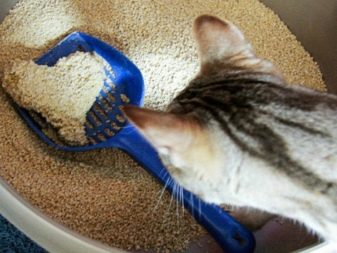

The next video is about which filler is safer.
































